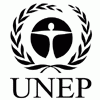Community / Land projects / Integrated Community - Based Conservation of Peatlands Ecosystems and Promotion of Ecotourism in Lac Télé La
Integrated Community - Based Conservation of Peatlands Ecosystems and Promotion of Ecotourism in Lac Télé La

€5173598.882
12/22 - 12/22
Completed
This project is part of
Implementing Organisations
Donors
Data Providers
Objectives
To promote a model for integrated community-based conservation and protected area management applied to the peatland area and its forest ecosystem of the RoC Lac Télé Landscape.
Other
Note: Disbursement data provided is cumulative and covers disbursement made by the project Agency.
Target Groups
The project is designed to strengthen and develop on-going efforts in the Republic of Congo, as well as in the greater Congo Basin region to conserve globally significant biodiversity within forest landscapes and sustainably manage a big tropical peatland found within the country, and extending into neighbouring countries. The project will, however, deliver tangible economic benefits to local communities within target areas. This will be achieved through developing and implementing land use management plans, improving the legal and policy framework, improving environmental management within project area to help maintain existing livelihoods and develop new options related to ecotourism, NFTP and organic cocoa value chains, sustainable wildlife management and agriculture as well as reducing social and economic costs of environmental degradation, unsustainable exploitation of natural resources and wildlife crime. The cost of human-wildlife conflict will also be reduced by the demonstration of practices that will avoid these conflicts at village level including ecological solutions through bee hives for honey production, and by the protection of habitat in the project area as elephants will be kept away from VTs due to their remembering of bee mass attacks. More specifically the project will work with key production sectors within the project area and in related transboundary landscapes to strengthen sustainable livelihoods practices. The introduction of CBNRM, SLM, and SFM is expected to trigger more efficient management of natural resources reducing cost of exploitation or increasing yield in the long-term, this includes for instance sustainable land management practices increasing soil productivity, and agroforestry practices introducing new sustainable agricultural production options for local communities. For instance sustainable integrated land management through agroforestry, multiple use sustain yield tree crops, orchard fruits, aquaculture, honey bee production along with wildlife oriented ecotourism and hotspots permanent monitoring, rural entrepreneurship activities for small business services will provide upwards of 2,500 environmentally friendly jobs for sustainable inclusive green growth. The project will thus contribute to increase local communities’ income in the long term including income from sustainable agriculture through the creation of agricultural products collect, transport, processing and trading and develop their partnership with private agricultural companies, which could commercialize their processed production. The proposed intervention will also support the development of direct or indirect revenue generation from conservation activities for local communities; appropriate revenue generation mechanisms compatible with the protected areas status and ecological characters and responsive to local community needs will be analyzed. Mechanisms will include ecotourism, handicrafts, and derivatives of sustainable non-timber products to which value has been added. The project will also facilitate targeted communities, relevant common initiative groups, community-based organization, as well as authorities to establish community tourism enterprise to promote ecotourism, tourism based small businesses, services and products as alternative livelihood source. Eco-tourism initiatives have the potential to create around upward of 750 direct jobs if the area manages to attract at least 2,000 tourists a year through the support of this project and relevant long-term partners within the ministerial and non-governmental organization spaces. A major aspect of the project concerns law enforcement strengthening and anti-trafficking activities on the ground. The related activities undertaken during the project will trigger a stronger and more efficient legal mechanism with better crime scene management and criminal investigations, as well as a stronger capacity of PA managers and patrols to prevent and address wildlife crime in the project area. Local communities will thus benefit from an improved security in the zone, with better surveillance of routes and hubs preventing armed groups from freely entering the area. The project will support social cohesion in the regional transboundary area by fostering increased cooperation between stakeholders over essential issues concerning natural resources management and wildlife crime. Consultations platforms will enable stakeholders to negotiate and solve issues concerning logging concessions for instance. In this process indigenous people and small local communities will be given the opportunity to participate to the decision-making process to ensure their fair representation and appropriation of the development process of the zone. These communities will also receive support to develop community based forest management through the biological resources access. According to the government’s 2010 report to CEDAW, women produced approximately 90% of food products for household consumption. In 2016, the government reported that women accounted for 70% of the agricultural workforce but own only 25% of agricultural land usually in small holdings. This project is carefully integrating gender mainstreaming considerations to ensure that the project benefits are fairly distributed across genders with special emphasis on women for capacity-building activities on SLM and alternative livelihoods. Women will benefit from the introduction of alternative livelihoods creating agricultural jobs and alternative source of income. They will also participate as full members in decision-making, access to project resources, and in contributing to feedback on project implementation processes and directions.




